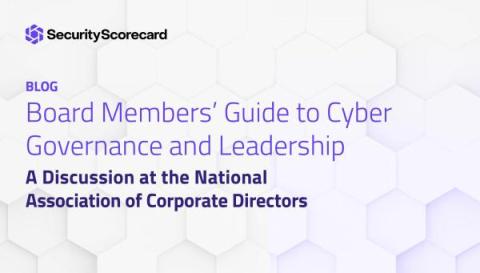Security | Threat Detection | Cyberattacks | DevSecOps | Compliance
Governance
3 2 1... Impact! Early Results under the SEC's Cybersecurity Governance Rule
5 Cyber Governance Tips for Board Members, Inspired by New Bitsight-Google Study
Navigating the Future of AI Governance: A Guide to NIST AI RMF, ISO/IEC 42001, and the EU AI Act
5 Compliance and Governance Happenings That Will Drive Exposure Management in 2024
Guarding Governance: Cybersecurity in the Public Sector
What is Data Governance?
As the importance of data continues to grow, and the amount of data being processed by organizations grows further, many organizations are beginning to feel the constraints and demands of compliance. Therefore this makes data governance paramount to guarantee the security, accuracy, availability, and usability of your data. Data governance encapsulates the approach to managing data during its lifecycle, from acquisition, to use, to disposal.
The Role of AI in Your Governance, Risk and Compliance Program
In today’s rapidly evolving business landscape, organizations face an ever-increasing array of risks and compliance challenges. As businesses strive to adapt to the digital age, it has become imperative to enhance their Governance, Risk Management, and compliance (GRC) strategies. Fortunately, the fusion of artificial intelligence (AI) and GRC practices presents a transformative opportunity.
Board Members' Guide to Cyber Governance and Leadership
Last week, I had the opportunity to moderate a panel at the NACD Summit, where I was joined by: Deven Sharma, Former President at S&P; John Katko, Former Member of U.S. House of Representatives; and Aaron Hughes, CISO at Albertsons. The National Association of Corporate Directors (NACD) holds its summit annually to empower directors and transform boards to be future ready. Our panel discussion focused on how board members can strategically oversee their organizations’ cybersecurity resilience.
Taking Power Platform Security and Governance from 0 to 60: Part 2
In the first part of this blog series, we explored the foundational steps required to kickstart a robust security program for any organization’s low-code/no-code development environment within Microsoft Power Platform. We discussed the importance of differentiating between sensitive and non-sensitive data, identifying the makers and builders, and implementing the principle of least privilege access.










